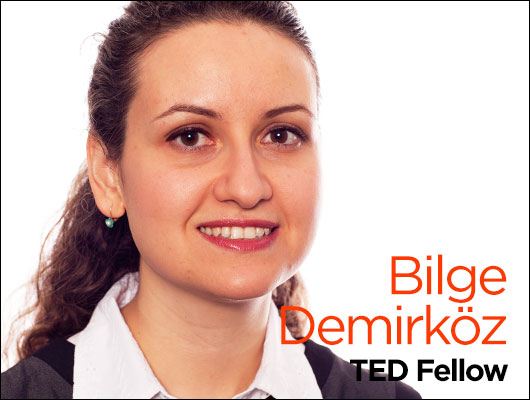
What is it about space and the investigation of dark matter and antimatter that captures your imagination?
Well to me, the question is, Why are we here? Or, why am I the way I am? And what made me the way I am? And that in itself is a cosmological question. It’s clear that a very big mechanism is at hand to make this universe exactly the way it is.
We know that about only 4 percent of the universe is made up of matter like us. And then there is something really mysterious called dark energy, which is making the universe expand and accounts for 73 percent of the energy of the universe. And then there’s this other part, about 23 percent, which is called dark matter and is mostly what is holding galaxies together. So most of the matter in the universe is actually dark matter. And that’s pretty amazing stuff.
And it’s fascinating to me to think that there is some matter that’s passing through me and I don’t even feel it — and we can even calculate its speed, something like 380 km per second. But we don’t know what it is — that’s dark matter. And then to think, Why am I made of matter? Why not antimatter? Is there a reason? Maybe there is a reason. Maybe there is something really fundamental about an asymmetry between matter and antimatter, but we haven’t figured it out yet. And I find many things fascinating, like neutrinos. There are about a trillion of them passing through me right now just about the speed of light, and that gives me goosebumps.
I’m really excited that physics could actually figure out what dark matter is in my lifetime, and so I want to contribute to that effort. I left Turkey 15 years ago to study physics at MIT, along with music and mathematics. During my time there, I got involved with the Alpha Magnetic Spectrometer (AMS), a particle physics experiment that was to be installed on the International Space Station. I started my PhD at MIT on the AMS, but after the Columbia accident, the future of shuttle missions became uncertain. So I decided to leave MIT and went to Oxford for my PhD. There, I worked on the ATLAS experiment, one of the Large Hadron Collider’s four big experiments. At Oxford we built the heart of the detector — the semiconductor tracker. And I worked underground for some years at CERN.
What were you looking for there?
Again, dark matter, in essence. But the Large Hadron Collider serves multiple purposes. For instance, we are also looking for the Higgs particle. We’re looking for extra dimensions, which might explain why gravity is so weak in the universe. After working at CERN for seven years — part of it as a fellow there and through various universities — I decided I missed home. So I accepted a faculty position here at METU, the Middle East Technical University, Ankara. I now divide my time between teaching as an associate professor here and conducting research at CERN. I’ve also rejoined the AMS project because it finally went to the International Space Station in May last year.
What does the AMS do?
The AMS is taking cosmic ray data. The universe produces high-energy cosmic rays — high-energy particles in stellar explosions, supernovas, and plasma jets in the galaxy. They come and impinge on the Earth and hit the atmosphere. If we can catch these particles out in space on the International Space Station, we can learn a lot about the universe from them. And maybe we can learn more about dark matter. But we’re looking for many different things, trying to understand more about the universe. If we found an anti-helium nucleus, for example, it would be really exciting. If were to find an anti-carbon atom, this could only be made in an anti-star, and an anti-star could only probably exist in an anti-galaxy. And that would be a very interesting find.
How can you get your head around something like an anti-galaxy? What does that mean?
Imagine a galaxy completely made of antimatter instead of matter, which is just really far away, so it doesn’t interact with us. If it were near, parts of it would be annihilated and we would see that signal. Antimatter is the opposite of matter — when matter and antimatter come together, they annihilate to two photons. At CERN we can actually produce antimatter, but in very, very small quantities, in hundreds of atoms. But we can’t store it for very long because you have to capture it somehow, and it eventually hits the walls of the container and then just gets annihilated. But we have learned that the laws of physics are very nearly the same for matter and antimatter. There may be a cluster of antimatter galaxies hanging out there somewhere. But matter and anti-matter behave similarly, so we may not have figured out it exists because light from it looks the same.
I have a group now working on understanding the data coming from the AMS detector with the aim of later analysis. My students are really excited to be working on data coming from space, as you can imagine. Some of them will soon be working at the AMS POCC (Payload Operation Control Center) at CERN this summer and are very excited about that, too.
Tell us about CERN’s Accelerating Science exhibition, which you helped bring to Ankara. Why was it important for you to bring this exhibition to Turkey?
When I came back to Turkey, I found that there was a lot of misinformation about CERN here. I think Turkish newspapers copied a lot of what the British tabloids have written about CERN, that it would destroy the universe. What people don’t realize is that we’re trying to answer very fundamental questions about the universe, but at the same time this science has an impact on their lives. When we do cutting-edge science, we end up developing technologies that the world didn’t know yet that it needed — for example, the World Wide Web was developed at CERN by Tim Berners-Lee. Another example is Positron Emission Tomography (PET) machines. Most people think antimatter is very special, but positron is simply the antimatter of electron. We use it for tomography — for medical imaging. Many people don’t even know this.
Fundamental science for its own sake eventually leads to great technological advancements. So it’s absolutely worth asking the questions. That’s what the exhibition is about. It also shows how technology is developing at CERN, and new technology is redeveloping — such as superconducting technologies — as well as new particle detection technologies and how they eventually could affect our lives.
Some people ask me, What good is dark matter? Well, we don’t know what dark matter is, so I can’t answer that question. But once we do know, maybe we will figure out a way to use it. And I think people do leave this exhibition with a greater appreciation of the value of fundamental science.
Has it been well received?
Yes. About 600 to 700 people visit it every day. When CERN’s director general, Dr Heuer, came to open the exhibition, the auditorium, which seats 900 people, was packed. Really, people were hanging from the stairs, 200 standing in the back.
It is the first time this exhibition has traveled outside the CERN member states. Turkey has applied to become a member of CERN. I absolutely support this idea because Turkey could really benefit, especially from technology transfer as well as educational and fundamental science programs.
Young people especially love it. The exhibition covers about 400 square meters and has different rooms with interactive exhibits. There’s a film about the evolutionary stages of the universe, which is projected onto the ground, so it feels like you’re falling into it. There are games and a “Spacebook” feature where fundamental particles each have a Facebook page, and they interact. We have games, such as building your own accelerator, changing its energy and seeing what particles come out. And there’s a 3D model of the Large Hadron Collider, of the ATLAS detector, with collisions coming out of the center, so it looks pretty cool.
The visitors don’t always understand everything, but they do walk away with a sense of wonder, because the exhibition talks about the universe and describes the scale of what we don’t know. We have volunteer guides who answer questions. Generally, we convey the message that we haven’t solved all the mysteries of the universe — there’s much to be done, and this opens the possibility of contributing to the effort. They like that, especially the young people.
What about your life as a musician? Did you give that up for the stars, or does music dovetail with your life in science?
It’s an extremely integral part of my life. I think I would be half a person if I were to leave music alone. In almost every culture, there is some music that goes hand-in-hand with science, because we get down to the mystical with science — and we also reach that mystical aspect with music. When the two go together, it can take us to a deeper dimension.
Actually, at the exhibition’s opening ceremony, Burcu Karadag — an amazing ney player — Talat Er, Ahmet İzgi and Orkun Eruygun played some mystical Turkish classical music while we showed images from the Hubble telescope. It was magic.
What music do you think best expresses the nature of the cosmos?
That’s a very hard question. I think there’s a lot of music that goes to the heart of it. The classical answer is Bach, as I’m sure many people would say. But I think that’s because we’re steeped in Western culture.
Why do you suppose everyone says Bach? Do you think there’s a real structural basis for that?
Clearly, Bach’s music has mathematical structures that are inherent in wave theory. I teach quantum mechanics, and the first thing we do before quantum mechanics is wave mechanics, because we model all particles as waves and particles at the same time. We then construct this thing called the wave function — which is how it turns out quantum mechanical particles behave. But before you can do that, you have to understand the classical wave. When you solve this famous wave equation, you immediately get these harmonics that form the basis of scales and major triads. How particles resonate in a cavity is equivalent to solving how the piano string vibrates. And that universality is amazing.
But how those scales have formed can also have many different colors. So the Western scale is an example scale, but is not the only scale that fits into that wave theory. We now mostly use the equal temperament in Western music rather than the well-tempered scale, so that we can play in many tonalities or scales. Turkish music has many different scales, not just the classical scales. In Turkish classical music, we use in-between notes. For example, between an A and a B in Turkish music, you can have many different notes. And using those in-between notes, you can make new scales. While to a Western ear this sounds very strange initially, these notes actually exist as harmonics of the lower notes and are therefore quite natural. We just don’t use them in the West because over time we have developed well-tempered and equal-tempered scales, which have other practicalities such as major and minor triads and, in the case of equal temperament, being able to transpose music.
Actually, when people hear Bach the way that Bach meant it to be, it actually sounds very different, because now we’ve got these perfect equal-tempered scales, and equal-tempered scales are not what Bach used to use. He used well-tempered scales some of the time, tuned A to around 415Hz instead of the 440Hz we generically use now.
I think there is no absolute answer as to which music best expresses the cosmic connection. Maybe Bach is the best answer in the Western tonalities, but I think that Turkish classical music, which uses the very mystical ney and some of these in-between notes, also goes a long way. And yes, maybe Tuvan throat singing or African djembe music gets there too! Why not?
How have you continued to be involved with the TED Fellows?
We have a new arts program at CERN called Collide at CERN. Instead of colliding particles, CERN decided to collide scientists and artists. I’ve helped some of the TED Fellows apply to that. Julie Freeman — who maps out fish movements and translates that to music — visited, and stayed for two days. I’ve invited a few other Fellows, and I hope they’ll come as well.
I do think we need to collide arts and science again somehow. I have a very long-term view on this; it’s not something that’s going to happen overnight, but I think we need a new Renaissance. You know how Renaissance artists used to know so much science and its scientists used to be also artists? Now the two have fallen apart. Over the last hundred years, especially, science has gotten so wrapped up and compartmentalized, I think it’s no longer on the mind of the artist or the public. And it’s a shame, because both dig into the mystic — both ask the quintessential question of why are we here. With art and science disconnected, there’s an aspect of understanding we’re missing out on.
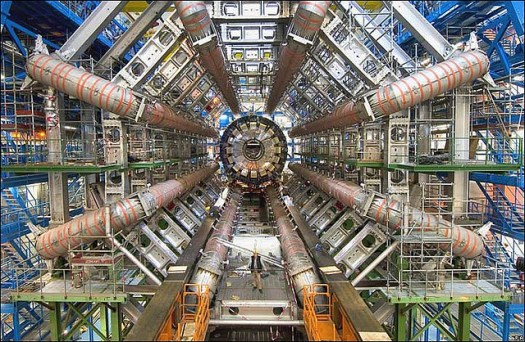
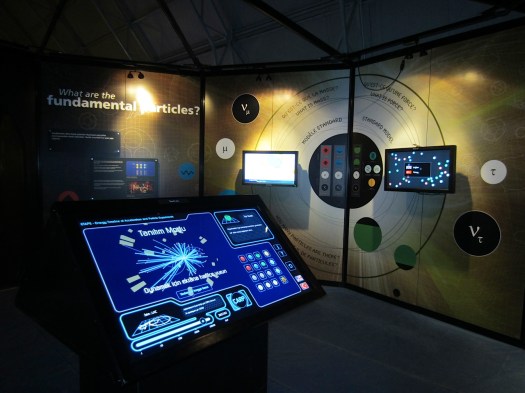
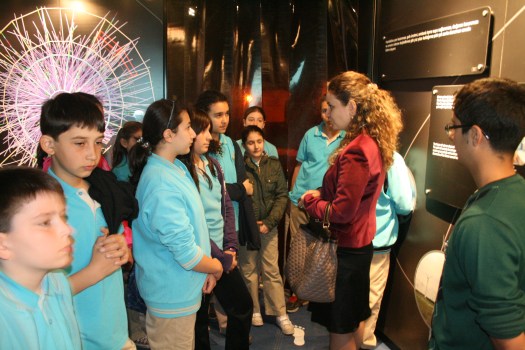
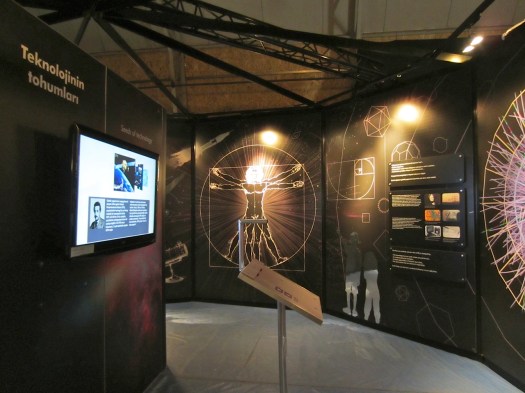
Comments (13)
Pingback: TED News in Brief: A dance that explains chicken sperm competition, a new look at a drowning island
Pingback: TED News in Brief: A dance that explains chicken sperm competition, a new look at a drowning island | Best Science News
Pingback: TED News in Brief: A dance that explains chicken sperm competition, a new look at a drowning island - nuhrdspace.com
Pingback: New York Based Web Design | SEO | Social Media Marketing | Email Marketing | Lead Generation | NY | TED News in Brief: A dance that explains chicken sperm competition, a new look at a drowning island
Pingback: Cosmic harmonies: Fellows Friday with Bilge Demirkoz | Words From the Wacky Widow
Pingback: TED Blog | Cosmic harmonies: Fellows Friday with Bilge Demirkoz | 阿玛尼干洗店加盟连锁品牌